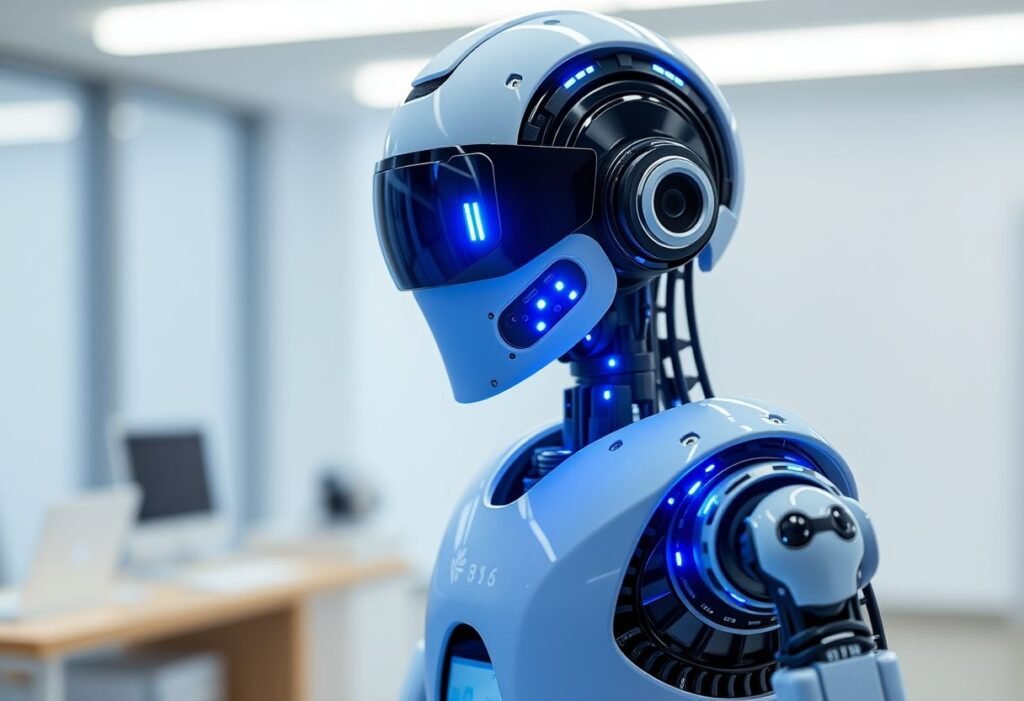The emergence of humanoid robots signifies a pivotal shift in robotics technology, promising innovative assistance in both workplaces and homes. As companies invest in advanced technologies, the need for human-like interfaces becomes increasingly evident.
The Next Generation of Humanoid Robotics
Figure, a forward-thinking robotics company based in California, has unveiled its second-generation humanoid robot, designated F.02. This model is designed to enhance efficiency in commercial environments, specifically targeting production lines. Its advanced mechanics allow it to undertake complex tasks that require dexterity and adaptability, setting a new standard in the industry. Figure’s ongoing research aims to refine these capabilities further, ensuring that the F.02 is not just a tool but a valuable team member, bettering productivity and workplace relations.
Humanoid Robots: A Realistic Look into the Future
The vision behind humanoid robots like F.02 extends beyond their initial commercial applications. As technology progresses, the potential for these robots to transition into domestic settings is becoming more tangible. Figure anticipates that in the near future, households may benefit from having a bipedal butler, capable of performing a variety of chores. This adaptability highlights the versatility of humanoid designs, addressing the needs of modern consumers while providing significant convenience.
Enhancing Efficiency in Commercial Settings
In industrial contexts, the capabilities of F.02 are particularly impactful. With a design focused on high-performance tasks, it can assist in areas such as assembly lines, food production, and even logistics. Its operational efficiency not only improves workflow but also reduces strain on human workers, allowing them to focus on higher-order problem-solving and decision-making. Thus, integrating humanoid robots may lead to a more balanced division of labor, fostering a collaborative environment.
Technological Advancements Driving Innovation
The development of humanoid robots is fueled by significant advancements in machine learning, artificial intelligence, and sensor technology. As these components merge, robots like F.02 become more intuitive in understanding and executing tasks based on their environment. The combination of these technologies enables seamless navigation around obstacles and user interaction, rendering them not just programmable machines but intelligent assistants that learn and adapt over time.
Social Implications of Humanoid Robots
The introduction of humanoid robots into everyday life raises various social and ethical considerations. While their capabilities promise to enhance living and working conditions, questions arise concerning job displacement and the future of human labor. Stakeholders must address these concerns proactively to ensure the integration of humanoid robots into society is beneficial. Public acceptance will hinge on transparent communication about the role these robots will play, emphasizing collaboration rather than competition with human workers.
Conclusion: The Future Awaits
As Figure continues to refine the F.02 and future models, the dialogue surrounding humanoid robots will expand. The balance between technological innovation and societal impact will dictate how quickly and effectively we can incorporate these advancements into our lives. Anticipating the changes these robots will bring enables us to prepare and adapt for a future where humanoid assistance is commonplace, paving the way for an enhanced quality of life.
Disclaimer: This content is for informational purposes only and may not reflect the latest developments in robotics technology.





















